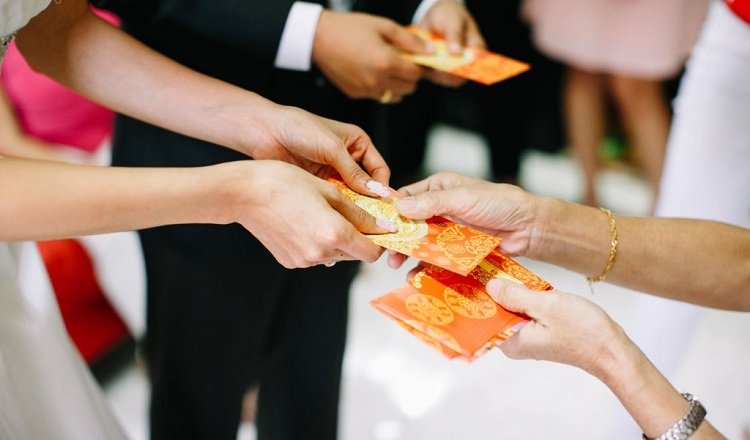Contents
ToggleVietnamese Lunar New Year and the Tradition of Red Envelopes
What is Tết?
Tết Nguyên Đán, or Lunar New Year, is the most important holiday in Vietnam. It’s a time when families reunite, pay respect to their ancestors, and welcome the new year with wishes for health, happiness, and prosperity.
What is lucky money?
Known as lì xì, lucky money is given in small red envelopes that symbolize good fortune, kindness, and renewal. The envelopes are usually offered by elders to children and younger family members, making it one of the most anticipated and joyful traditions of Tết.
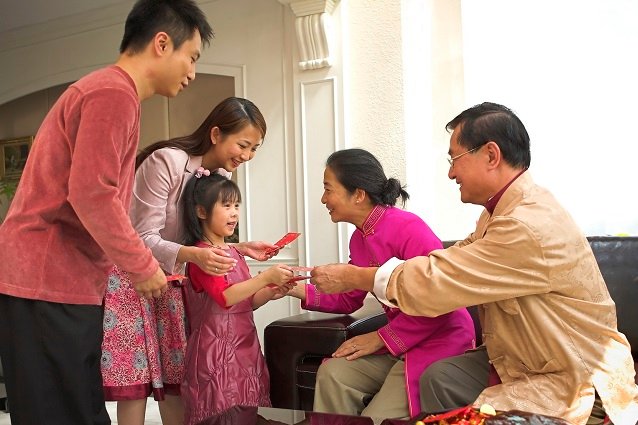
The Cultural Origins of Red Envelopes
The tradition of giving red envelopes in Vietnam has roots in both Chinese folklore and local royal customs. According to one legend, ancient families placed coins inside red paper to ward off evil spirits that threatened children at night. The bright red color symbolized protection, energy, and good luck.
In Vietnam, the practice was also embraced by the royal court. Kings and mandarins distributed red envelopes during Tết as a gesture of prosperity, harmony, and blessing for the year ahead. Over time, this custom spread across all levels of society, becoming an essential part of Lunar New Year celebrations.
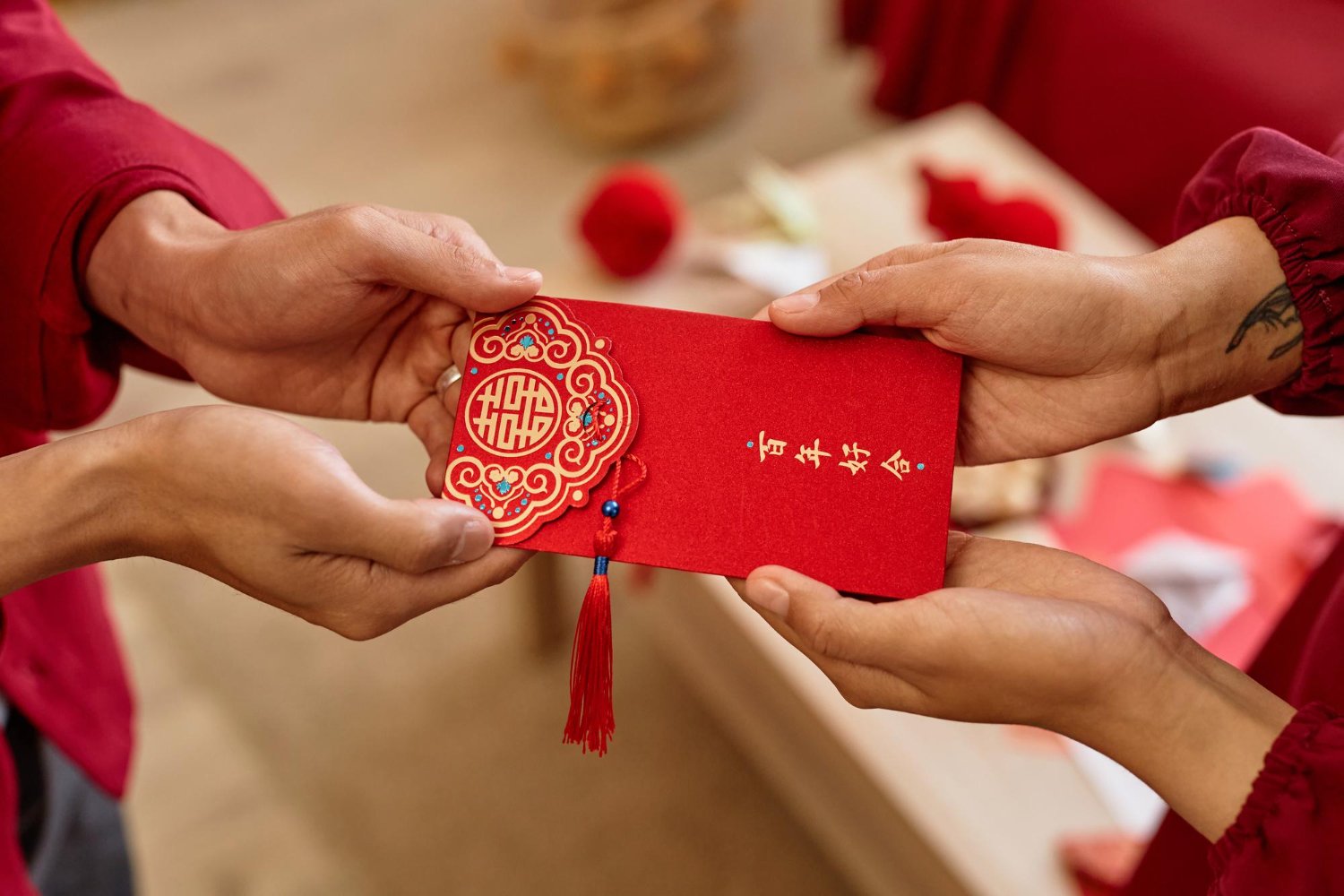
Types of Red Envelopes
Red envelopes, or bao lì xì, come in many forms, reflecting both tradition and modern creativity:
- Traditional designs often feature bright red backgrounds with golden calligraphy, flowers, or auspicious symbols like carp, dragons, or peaches. These emphasize prosperity and longevity.
- Modern styles are popular with children, decorated with cartoon characters, zodiac animals, or playful patterns that add a fun, contemporary twist.
- Handmade envelopes are crafted with care, sometimes personalized with names or messages, making them especially meaningful gifts between close friends and family.
If you visit Vietnam during Tết, streets and markets burst with color. Hàng Mã Street in Hanoi and Bình Tây Market in Ho Chi Minh City are two of the most vibrant places to browse the endless designs, from classic to quirky.

When Is Lì Xì Given?
The most meaningful moment to give lì xì is on the very first morning of Tết, right after families gather to offer incense to ancestors and exchange New Year’s wishes. Children bow or fold their arms respectfully to their elders, who in turn present the red envelopes along with kind words of blessing.
While the first day holds the greatest importance, the custom continues throughout the festive period. Red envelopes are often exchanged during the first three days of the new year, though in some regions the practice extends until the ninth or even tenth day.
It’s not limited to family either — when friends, neighbors, or colleagues visit each other’s homes, envelopes are shared as a gesture of goodwill, ensuring that everyone starts the year with joy, luck, and positive energy.
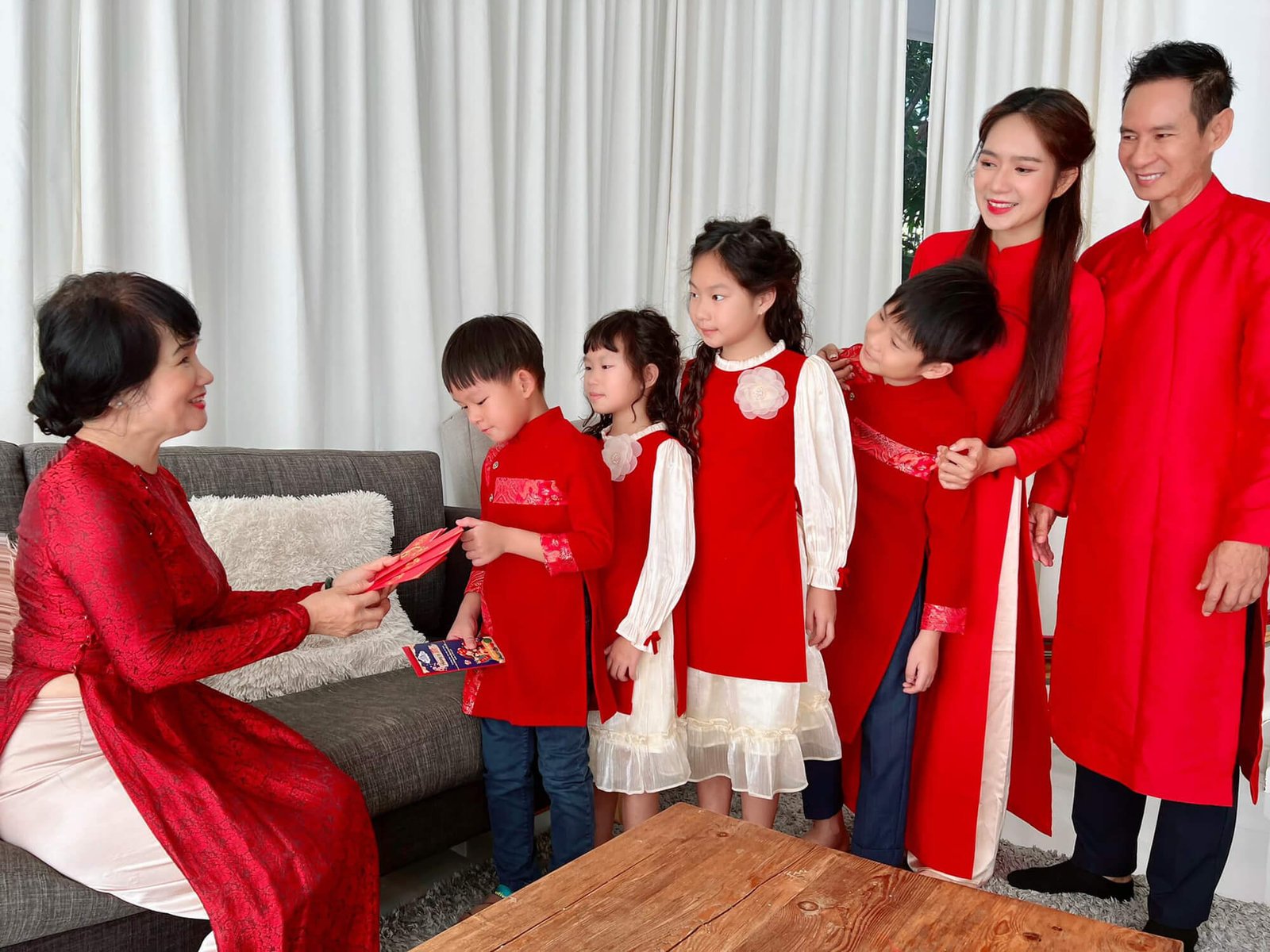
Who Receives Lucky Money?
- Children & Teenagers – The most common recipients, as lì xì symbolizes encouragement for learning, growth, and a bright future.
- Parents & Grandparents – In many families, younger members also present envelopes to their elders as a heartfelt gesture of respect, gratitude, and wishes for health and longevity.
- Others – Close friends, colleagues, and even neighbors may exchange red envelopes as tokens of goodwill.

How Much Money Should You Give?
The value of lì xì lies in the blessing, not the amount. What matters most is the thoughtful gesture:
- Children – 20,000 to 50,000 VND (about $1–2 USD)
- Close relatives – 100,000 to 500,000 VND (about $5–20 USD)
- Tourists – A modest 50,000 to 100,000 VND ($2–4 USD) is warmly received when given with sincerity.
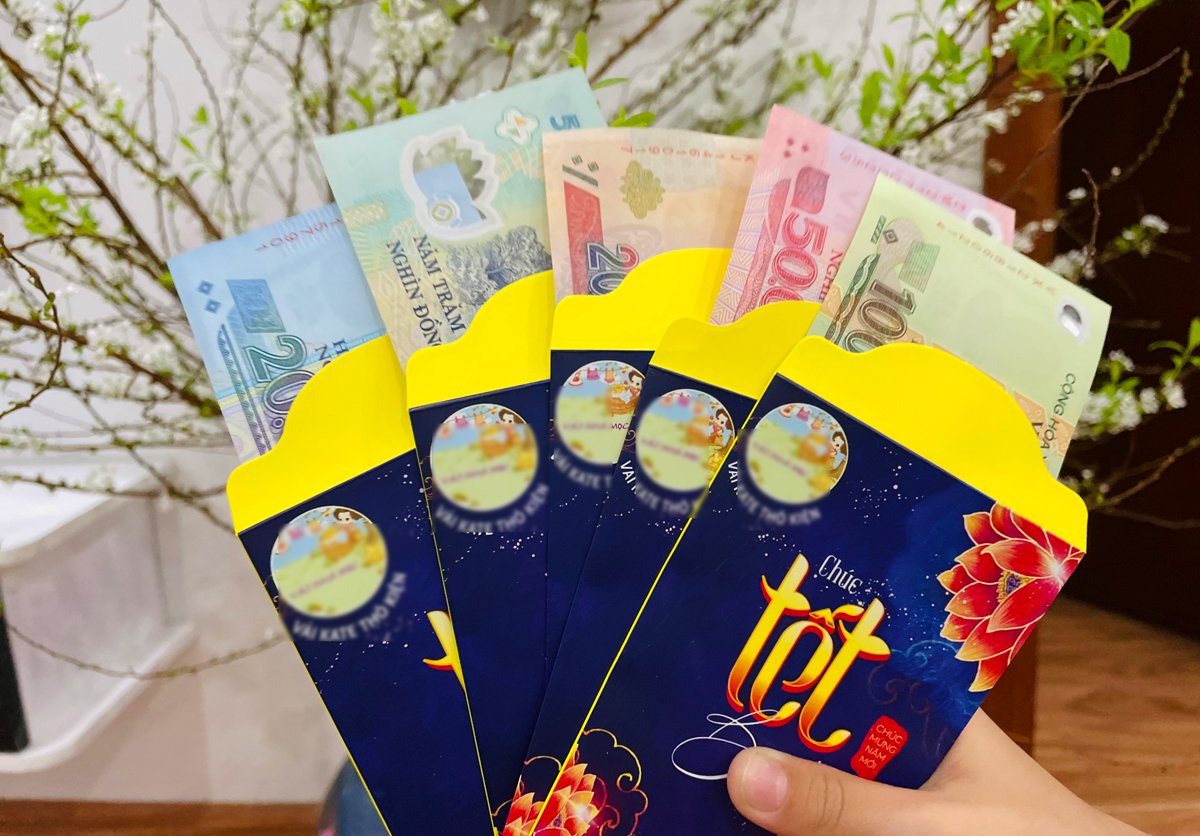
Common Greetings During Lì Xì
When giving or receiving lì xì, words of blessing are just as important as the envelope itself. Some common greetings include:
- “Chúc Mừng Năm Mới” – Happy New Year!
- “Chúc ông bà sống lâu trăm tuổi” – Wishing grandparents long life and good health.
- “Chúc cô chú mạnh khỏe, phát tài” – Wishing you health, happiness, and prosperity.
💡 Etiquette tip: Always present and receive red envelopes with both hands and a warm smile. A kind word and gesture make the blessing complete.
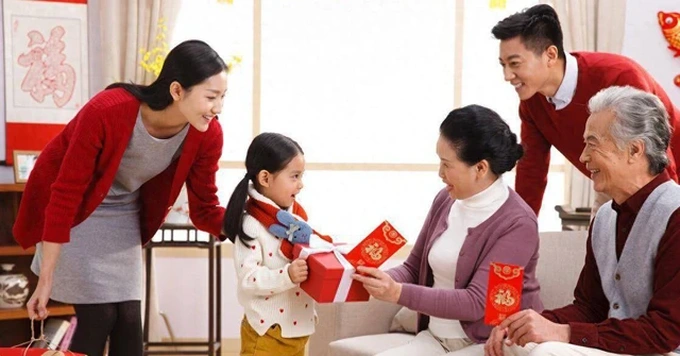
Lì Xì Etiquette: What Not to Do
While lì xì is a joyful custom, observing proper etiquette keeps the tradition respectful:
- ❌ Don’t give old, crumpled, or torn bills – Fresh, crisp notes symbolize purity and good fortune.
- ❌ Don’t open envelopes in front of the giver – Wait until later, as opening them immediately can appear impolite or greedy.
- ❌ Don’t give unlucky amounts – Avoid denominations with the number 4, as it is linked to bad luck in some Asian cultures.
- ✅ Ensure siblings or cousins receive equal amounts – This helps maintain harmony and avoids jealousy among children.
💡 Traveler’s tip: If you’re a guest in Vietnam during Tết, even giving a modest, crisp note with a smile will be warmly appreciated.
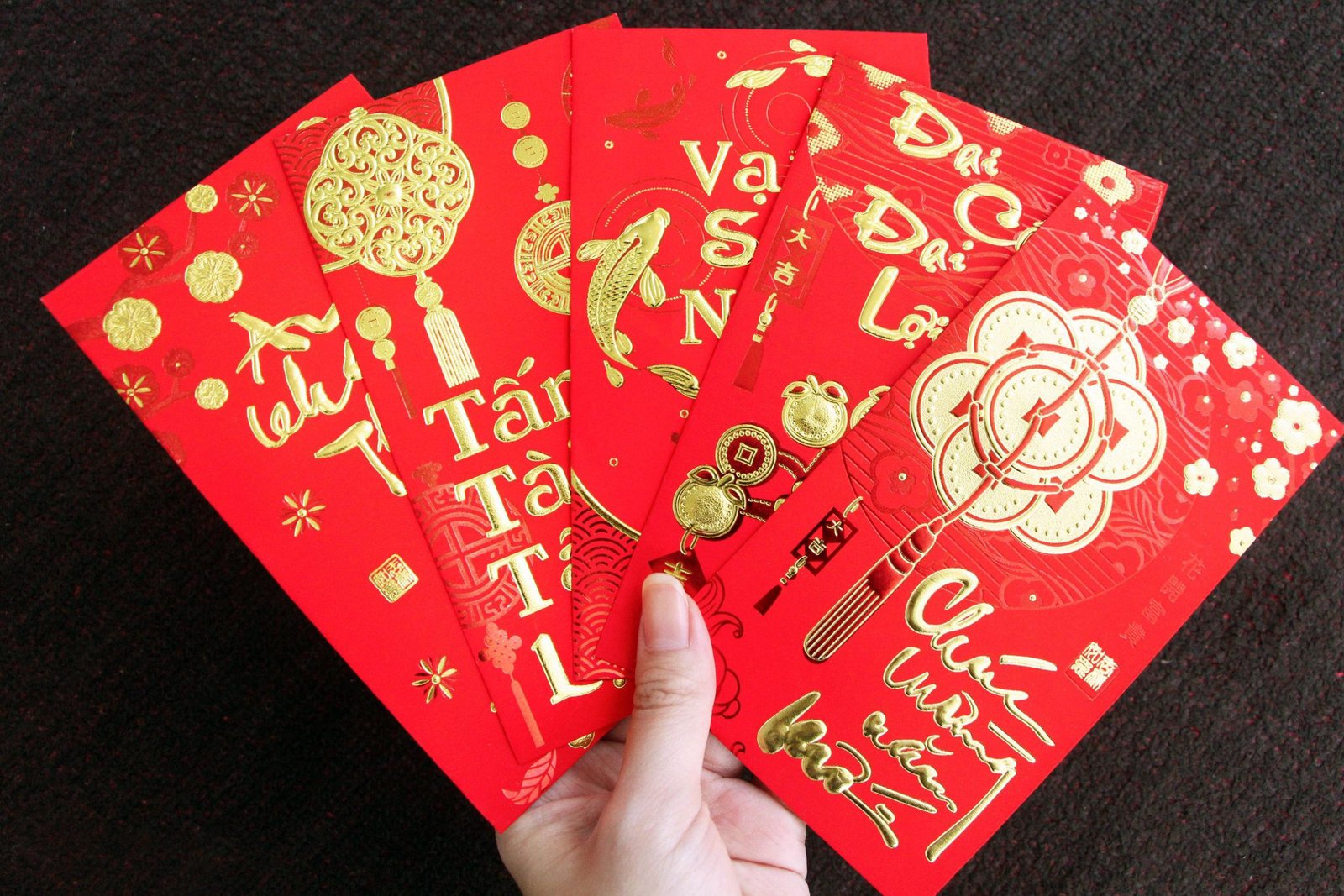
Tết: More Than Just Lucky Money
While lì xì is a beloved custom, Tết celebrations go far beyond red envelopes:
- Traditional foods – Families gather to share festive dishes like bánh chưng and bánh tét (sticky rice cakes), spring rolls, pickled vegetables, and candied fruits.
- Seasonal flowers – Each region has its symbol of renewal: peach blossoms (hoa đào) brighten homes in the North, while golden apricot flowers (hoa mai) bloom in the South.
- Spiritual rituals – Many families visit temples and pagodas to pray for good fortune, health, and prosperity in the year ahead.
Tết is ultimately about reunion, remembrance, and renewal—a time when food, flowers, and faith all come together to mark a fresh beginning.
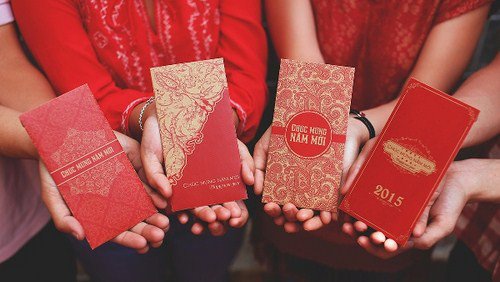
Final Thoughts
Lì xì is not simply about money in a red envelope — it is a heartfelt tradition that binds generations together with blessings, respect, and love. For locals, it carries deep cultural meaning; for visitors, it offers a unique way to connect with Vietnam’s warm spirit during the Lunar New Year.












